|
This month we are going to pour in our glasses two white wines from Friuli
Venezia Giulia and produced with two of the most well known white berried
grapes of this land. This Northern-Eastern region of Italy offers a view of
grapes and lands pretty singular, certainly among the most famous wine lands of
Italy and successful in the world. In particular famous for its white
wines, Friuli Venezia Giulia, besides having in its vineyards international
varieties, offers a remarkable selection of wines produced with genuine
indigenous grapes. The bond of Friuli Venezia Giulia to white grapes is
strong and historical, despite today are red grapes cultivated in this
region to be successful in Italy and abroad. White wines of Friuli Venezia
Giulia, and therefore its indigenous and international grapes, play in fact a
fundamental role in the wine making scene of Italy.
There are many grapes cultivated in this region and all having an extraordinary
enological value, with a production virtually embracing every wine style, from
dry whites to sweet wines made from dried grapes. Among the white berried
grapes, there is one to be particularly notable, that is the grape now called
Friulano, because of the recent happenings which forced the grape to change its
name after having been called Tocai Friulano for a very long time. It is the
only glory of Friuli Venezia Giulia, as there are many grapes which made this
region famous, such as the whites Ribolla Gialla, Verduzzo, Malvasia Istriana
and Picolit, the reds Refosco dal Peduncolo Rosso, Schioppettino, Pignolo and
Tazzelenghe. In the region are also found international varieties, widely
introduced to this territory, as well as all over the Northern-Eastern part of
Italy, after the unlucky effects of phylloxera. The spreading of international
grapes is still today important and they are in fact widely found in many
Denominazione d'Origine Controllata wines of this region.
Friulano received quite a lot of attention in recent times because of the long
controversy it had with the Hungarian wine Tokaji, at the end of which was
decided the change of its name. Because of this decision, as of March 2007, the
glorious Tocai Friulano - frequently called in short as “Tocai” - had to
change its name into Friulano, after having pondered the possibility of calling
it Tai. Friuli Venezia Giulia tried, with no success, to oppose to this
decision, however as of vintage 2008 in the labels of bottles the mention
Tocai Friulano has been replaced with Friulano. Of course, the
glory and greatness of the grape did not change despite it had to change its
name. It should however be noticed none of the grapes used for the production
of Hungarian wine Tokaji - the most famous of them is Furmint - has a
connection to Friulano as they are absolutely different varieties.
Wines produced with Friulano gives to the sense of the taster typical qualities
capable of giving them a remarkable personality. Bitter almond certainly is
among the main olfactory sensations which can be perceived from a glass of
Friulano, a quality that - it should be said - shares with other grapes as
well. Wines produced with Friulano can be appreciated for a pleasing and
slightly bitter taste perceived after having swallowed the wine. Most of the
wines produced with this grape are dry, however there also are examples of
sweet wines. Friulano is particularly found in Friuli Venezia Giulia, its
homeland. It should also be noticed this grape is found, although marginally,
in Veneto - it is found in Bianco di Custoza wines - and in Lombardy is used
for the wines of San Martino della Battaglia. Friulano is generally vinified in
inert containers - in order to keep its characteristic aromas of bitter almond
- and sometimes it is fermented and aged in cask as well.
The history of Malvasia Istriana is different, better to say, of Malvasia
grapes as with this name are generally identified a pretty vast family of
grapes. It is a very ancient varieties which have always been successful,
catching the attention of men since the dawn of wine history and of which are
found many mentions in documents of the past. The name Malvasia comes from
the Greek city of Monemvasia, in the Peloponnese, where the famous wines
produced in this area were shipped all over Europe. The name Monemvasia
has been changed in the course of time and became Malvasia, a term used for
calling the wines recalling the original wine making style of this Greek city.
The spreading of Malvasia grapes is vast, and only in Italy can be counted
many varieties having this name, both white and red berried grapes.
|
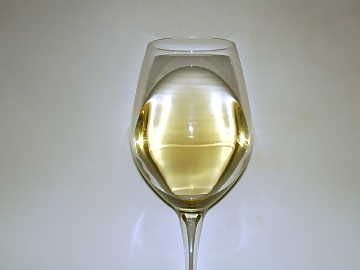 | |
| The straw
yellow color of Colli Orientali del Friuli Friulano | |
|
Grapes belonging to the family of Malvasia are considered, in general terms,
semi-aromatic varieties, that is capable of making wines with sensorial
qualities recalling grape juice, although not dominant. This characteristic is
found in wines produced with the varieties called Malvasia, however this
is not true for Malvasia Istriana, as it represents an exception to this
quality. If it is true in wines produced with Malvasia can be perceived the
aroma of grape, the same found in Muscat blanc, this is a quality missing in
Malvasia Istriana. Of the Malvasia grapes, the Istriana has the quality of
making wines with a moderate body yet elegant, in particular those made from
grapes cultivated in plain lands. Malvasia Istriana is particularly found in
Collio and Carso areas - here are being produced the best expressions of the
region - and it is also cultivated in the neighboring Slovenia and Croatia
where it is known as Malvazija Istarska. Just like Friulano, Malvasia
Istriana is mainly vinified in inert containers and the production in cask is
not so common.
Our tasting by contrast will examine a Colli Orientali del Friuli Friulano and
a Collio Malvasia. It should be noticed that, in general terms, in bottles of
Malvasia is rarely written the term “Istriana”, a characteristic which must
be considered implicit, as it is exclusively made with Malvasia Istriana. In
choosing our wines we will pick two bottles vinified in inert containers,
possibly in steel tanks, in order to better appreciate the specific qualities
of the grapes. Getting two wines with these characteristics should not be
difficult as the vinification in inert containers is what it is mainly adopted
for both varieties. The two wines must belong to the most recent vintage,
therefore we will focus on the comparison of young wines. Our Colli Orientali
del Friuli Friulano and Collio Malvasia will be served in tasting glasses at a
temperature of 10 °C (50 °F).
After having poured the two wines in the glasses, let's begin our tasting by
contrast from appearance analysis, that is the phase in which is being
evaluated color and transparency. We will begin the examination of the
appearance by evaluating the glass of Colli Orientali del Friuli Friulano.
Let's tilt the glass over a white surface and observe the wine at the base. The
color Friulano shows to our sight is an intense and briliant straw yellow,
frequently showing a hue of greenish yellow. Nuances of Friulano, observed at
the edge of the glass, show a greenish yellow color, also a proof of the young
age of the wine. The color of Collio Malvasia is evidently paler than Friulano:
in this case it is the greenish yellow color to be mainly seen, brilliant and
intense, sometimes showing straw yellow hues. Nuances of Malvasia is not so
different from what we already observed at the base of the glass, by confirming
an evident greenish yellow hue.
The aromas expressed by Friulano and Malvasia Istriana give to the sense of the
taster olfactory profiles in which can be perceived remarkable differences. One
of the dominant qualities of Friulano is expressed by a strong aroma of bitter
almond, a characteristic very appreciated in wines produced with this variety.
It should be said the bitter almond aroma is also perceived in other varieties,
mainly white berried ones, and it is also possible to find it in red grapes. Of
course, there is more than bitter almond in Friulano, an olfactory profile in
which are expressed aromas of white and yellow fruits and flowers. The
olfactory profile of Malvasia Istriana substantially differs from Friulano,
however expressing in its wines interesting aromas of fruits and flowers. The
aging in wood of wines produced with these two varieties, although this is not
so common, adds tertiary aromas sometimes covering the typical qualities of the
two grapes. For this reason, it is thanks to the skill of producer to keep the
personality of Friulano and Malvasia Istriana by adding, at the same time,
complexity to the aromas of wine.
Let's start the evaluation of aromas from Colli Orientali del Friuli
Friulano. By keeping the glass in vertical position and without swirling, let's
proceed with the first smell in order to appreciate the opening of wine. From
the glass will be perceived, strong and clean, the characteristic aroma of
bitter almond, well mixed to sensations recalling white fruits. Specifically,
Friulano gives opening aromas of apple, pear and bitter almond. After having
swirled the glass, let's tilt it and smell: the wine will complete its
olfactory profile with hawthorn, peach, broom, plum, pineapple and, sometimes,
hay. Let's now pass to the opening of Collio Malvasia. The first smell will
bring to our senses aromas of apple, peach and hawthorn, very different from
Friulano. It will be noticed the absence of bitter almond, as well as hints of
grape juice, sometimes found in grapes belonging to the Malvasia family. After
having swirled the glass, the olfactory profile of Collio Malvasia is completed
by pear, plum, apricot, citrus fruits, as well as sensations of tropical fruits
such as pineapple and banana.
The tasting of the two wines reveals substantial differences, not only in the
taste but also in tactile sensations, structure in particular. The attack of
Colli Orientali del Friuli Friulano is characterized by a pleasing crispness
and structure. In the mouth can be perceived the good correspondence to the
nose, in particular bitter almond, apple, plum and peach. The attack of Collio
Malvasia too has a pleasing crispness but, as opposed to Friulano, the
perception of structure is evidently lighter, however having a remarkable
agreeableness. Correspondence to the nose is very good and it will be possible
to perceive clean flavors of apple, peach and pear, sometimes pineapple. In
both cases it is evident the role played by alcohol - it can easily be as high
as 13% - giving balance to the crispness of both wines and making them
particularly dry.
The final part of our tasting by contrast continues to reveal substantial
differences between Friulano and Malvasia Istriana. The finish of Colli
Orientali del Friuli Friulano is still characterized by the flavor of bitter
almond, also giving the wine its typical slightly bitter aftertaste, a pleasing
quality in case it is not excessively intense. Persistence is generally very
good, leaving in the mouth, besides the aforementioned bitter almond, flavors
of apple, plum, peach and pear. A different finish is given by Collio
Malvasia in which can be appreciated its pleasing crispness, with a good
persistence characterized by the flavors of peach, apple, plum and pineapple.
The sensation of structure is different in both wines: the finish of Friulano
leaves to the mouth a more robust sensation of body than Malvasia Istriana.
They however are agreeable and immediate wines, most of the times produced in
order to favor the very good agreeableness the two varieties from Friuli
Venezia Giulia can give to their wines.
|


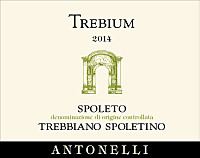
 Trebbiano Spoletino
Trebbiano Spoletino Intense straw yellow and nuances of golden yellow, very transparent.
Intense straw yellow and nuances of golden yellow, very transparent. Intense, clean, pleasing, refined and elegant, starts with hints of
medlar, apple and pear followed by aromas of peach, lychee, plum, hawthorn,
pineapple, broom, honey, mineral and hints of vanilla.
Intense, clean, pleasing, refined and elegant, starts with hints of
medlar, apple and pear followed by aromas of peach, lychee, plum, hawthorn,
pineapple, broom, honey, mineral and hints of vanilla.
 Crisp attack and however balanced by alcohol, good body, intense
flavors, agreeable.
Crisp attack and however balanced by alcohol, good body, intense
flavors, agreeable.
 Persistent finish with flavors of apple, medlar and plum.
Persistent finish with flavors of apple, medlar and plum. 6 months in cask, 4 months in bottle.
6 months in cask, 4 months in bottle. Cold cuts, Pasta with meat, Roasted fish, Sauteed white meat
Cold cuts, Pasta with meat, Roasted fish, Sauteed white meat
 Sagrantino
Sagrantino Intense ruby red and nuances of garnet red, little transparency.
Intense ruby red and nuances of garnet red, little transparency. Intense, clean, pleasing, refined and elegant, starts with hints of
blackberry, black cherry and plum followed by aromas of dried violet,
blueberry, tobacco, chocolate, leather, vanilla, cinnamon, mace, pink
pepper and menthol.
Intense, clean, pleasing, refined and elegant, starts with hints of
blackberry, black cherry and plum followed by aromas of dried violet,
blueberry, tobacco, chocolate, leather, vanilla, cinnamon, mace, pink
pepper and menthol.
 Tannic attack and however balanced by alcohol, full body, intense
flavors, pleasing roundness.
Tannic attack and however balanced by alcohol, full body, intense
flavors, pleasing roundness.
 Persistent finish with flavors of blackberry, black cherry and plum.
Persistent finish with flavors of blackberry, black cherry and plum. 24 months in cask, 12 months in bottle.
24 months in cask, 12 months in bottle. Game, Roasted meat, Stewed and braised meat, Hard cheese
Game, Roasted meat, Stewed and braised meat, Hard cheese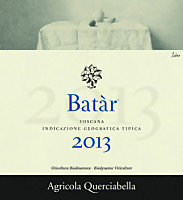
 Chardonnay (50%), Pinot Bianco (50%)
Chardonnay (50%), Pinot Bianco (50%) Brilliant straw yellow and nuances of straw yellow, very transparent.
Brilliant straw yellow and nuances of straw yellow, very transparent. Intense, clean, pleasing, refined and elegant, starts with hints of
banana, apple and plum followed by aromas of acacia, pear, grapefruit,
butter, mango, bergamot, vanilla, hawthorn, honey and mineral.
Intense, clean, pleasing, refined and elegant, starts with hints of
banana, apple and plum followed by aromas of acacia, pear, grapefruit,
butter, mango, bergamot, vanilla, hawthorn, honey and mineral.
 Crisp attack and however balanced by alcohol, full body, intense
flavors, pleasing roundness.
Crisp attack and however balanced by alcohol, full body, intense
flavors, pleasing roundness.
 Very persistent finish with long flavors of apple, banana and plum.
Very persistent finish with long flavors of apple, banana and plum. Fermented in barrique, about 12 months of aging in barrique.
Fermented in barrique, about 12 months of aging in barrique. Roasted fish, Stuffed pasta with mushrooms, Roasted white meat, Stewed white meat
Roasted fish, Stuffed pasta with mushrooms, Roasted white meat, Stewed white meat
 Merlot
Merlot Intense ruby red and nuances of ruby red, little transparency.
Intense ruby red and nuances of ruby red, little transparency. Intense, clean, pleasing, refined and elegant, starts with hints of
black currant, plum and black cherry followed by aromas of blueberry,
violet, peony, chocolate, tobacco, vanilla, leather, pink pepper, mace and
eucalyptus.
Intense, clean, pleasing, refined and elegant, starts with hints of
black currant, plum and black cherry followed by aromas of blueberry,
violet, peony, chocolate, tobacco, vanilla, leather, pink pepper, mace and
eucalyptus.
 Tannic attack and however balanced by alcohol, full body, intense
flavors, pleasing roundness,
Tannic attack and however balanced by alcohol, full body, intense
flavors, pleasing roundness,
 Very persistent finish with flavors of black currant, black cherry and
blueberry.
Very persistent finish with flavors of black currant, black cherry and
blueberry.
 18 months in barrique, 6 months in bottle.
18 months in barrique, 6 months in bottle. Game, Stewed and braised meat, Roasted meat, Hard cheese
Game, Stewed and braised meat, Roasted meat, Hard cheese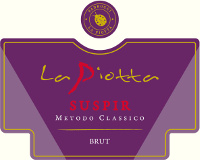
 Pinot Nero
Pinot Nero Intense cherry pink and nuances of cherry pink, moderate transparency,
fine and persistent perlage.
Intense cherry pink and nuances of cherry pink, moderate transparency,
fine and persistent perlage.
 Intense, clean, pleasing and refined, starts with hints of cherry,
apple and raspberry followed by aromas of blueberry, plum, yeast,
strawberry and cyclamen.
Intense, clean, pleasing and refined, starts with hints of cherry,
apple and raspberry followed by aromas of blueberry, plum, yeast,
strawberry and cyclamen.
 Effervescent and crisp attack, however balanced by alcohol, good body,
intense flavors, agreeable.
Effervescent and crisp attack, however balanced by alcohol, good body,
intense flavors, agreeable.
 Persistent finish with flavors of cherry, raspberry and apple.
Persistent finish with flavors of cherry, raspberry and apple. Refermented in bottle on its lees for 24 months.
Refermented in bottle on its lees for 24 months. Pasta with meat, Stewed fish, Sauteed meat, Mushroom soups
Pasta with meat, Stewed fish, Sauteed meat, Mushroom soups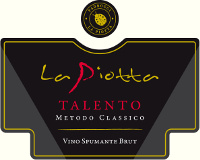
 Pinot Nero
Pinot Nero Brilliant straw yellow and nuances of straw yellow, very transparent,
fine and persistent perlage.
Brilliant straw yellow and nuances of straw yellow, very transparent,
fine and persistent perlage.
 Intense, clean, pleasing and refined, starts with hints of apple, plum
and bread crust followed by aromas of raspberry, yeast, pineapple,
hawthorn, pear and hazelnut.
Intense, clean, pleasing and refined, starts with hints of apple, plum
and bread crust followed by aromas of raspberry, yeast, pineapple,
hawthorn, pear and hazelnut.
 Effervescent and crisp attack, however balanced by alcohol, good body,
intense flavors, pleasing roundness.
Effervescent and crisp attack, however balanced by alcohol, good body,
intense flavors, pleasing roundness.
 Persistent finish with flavors of apple, pineapple and plum.
Persistent finish with flavors of apple, pineapple and plum. Refermented in bottle on its lees for 24 months.
Refermented in bottle on its lees for 24 months. Pasta with fish, Stewed fish, Roasted white meat, Broiled crustaceans
Pasta with fish, Stewed fish, Roasted white meat, Broiled crustaceans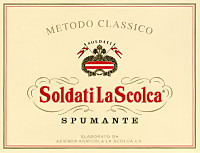
 Cortese
Cortese Brilliant straw yellow and nuances of straw yellow, very transparent,
fine and persistent perlage.
Brilliant straw yellow and nuances of straw yellow, very transparent,
fine and persistent perlage.
 Intense, clean, pleasing and refined, starts with hints of apple, plum
and bread crust followed by aromas of peach, almond, yeast, pear, hawthorn,
broom and mineral.
Intense, clean, pleasing and refined, starts with hints of apple, plum
and bread crust followed by aromas of peach, almond, yeast, pear, hawthorn,
broom and mineral.
 Effervescent and crisp attack, however balanced by alcohol, good body,
intense flavors, agreeable.
Effervescent and crisp attack, however balanced by alcohol, good body,
intense flavors, agreeable.
 Persistent finish with flavors of apple, plum and peach.
Persistent finish with flavors of apple, plum and peach. Refermented in bottle on its lees for more than 24 months.
Refermented in bottle on its lees for more than 24 months. Pasta with meat, Roasted meat, Roasted white meat, Stewed fish, Mushroom soups
Pasta with meat, Roasted meat, Roasted white meat, Stewed fish, Mushroom soups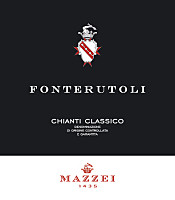
 Sangiovese (90%), Malvasia Nera, Colorino, Merlot (10%)
Sangiovese (90%), Malvasia Nera, Colorino, Merlot (10%) Brilliant ruby red and nuances of ruby red, moderate transparency.
Brilliant ruby red and nuances of ruby red, moderate transparency. Intense, clean, pleasing and refined, starts with hints of black
cherry, plum and violet followed by aromas of blueberry, raspberry,
blackberry, vanilla, mace and carob.
Intense, clean, pleasing and refined, starts with hints of black
cherry, plum and violet followed by aromas of blueberry, raspberry,
blackberry, vanilla, mace and carob.
 Properly tannic attack and however balanced by alcohol, good body,
intense flavors, agreeable.
Properly tannic attack and however balanced by alcohol, good body,
intense flavors, agreeable.
 Persistent finish with flavors of black cherry, plum and raspberry.
Persistent finish with flavors of black cherry, plum and raspberry. 12 months in barrique and cask.
12 months in barrique and cask. Broiled meat and barbecue, Roasted meat, Stewed meat with mushrooms, Hard cheese
Broiled meat and barbecue, Roasted meat, Stewed meat with mushrooms, Hard cheese
 Sangiovese (92%), Malvasia Nera, Colorino (8%)
Sangiovese (92%), Malvasia Nera, Colorino (8%) Intense ruby red and nuances of garnet red, little transparency.
Intense ruby red and nuances of garnet red, little transparency. Intense, clean, pleasing, refined and elegant, starts with hints of
black cherry, plum and violet followed by aromas of blueberry, blackberry,
cocoa, tobacco, mace, leather, menthol and vanilla.
Intense, clean, pleasing, refined and elegant, starts with hints of
black cherry, plum and violet followed by aromas of blueberry, blackberry,
cocoa, tobacco, mace, leather, menthol and vanilla.
 Properly tannic attack and however balanced by alcohol, good body,
intense flavors, agreeable.
Properly tannic attack and however balanced by alcohol, good body,
intense flavors, agreeable.
 Persistent finish with flavors of black cherry, plum and blackberry.
Persistent finish with flavors of black cherry, plum and blackberry. 20 months in barrique and cask.
20 months in barrique and cask. Roasted meat, Broiled meat and barbecue, Stewed and braised meat, Hard cheese
Roasted meat, Broiled meat and barbecue, Stewed and braised meat, Hard cheese
 Syrah
Syrah Intense ruby red and nuances of ruby red, little transparency.
Intense ruby red and nuances of ruby red, little transparency. Intense, clean, pleasing and refined, starts with hints of black
currant, black cherry and blueberry followed by aromas of plum, violet,
blackberry, raspberry, black pepper, chocolate and vanilla.
Intense, clean, pleasing and refined, starts with hints of black
currant, black cherry and blueberry followed by aromas of plum, violet,
blackberry, raspberry, black pepper, chocolate and vanilla.
 Properly tannic attack and however balanced by alcohol, good body,
intense flavors, agreeable.
Properly tannic attack and however balanced by alcohol, good body,
intense flavors, agreeable.
 Persistent finish with flavors of black currant, black cherry and
blueberry.
Persistent finish with flavors of black currant, black cherry and
blueberry.
 12 months in cask, 6 months in bottle.
12 months in cask, 6 months in bottle. Stewed and braised meat with mushrooms, Broiled meat and barbecue, Cheese
Stewed and braised meat with mushrooms, Broiled meat and barbecue, Cheese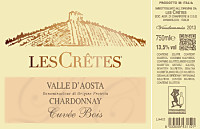
 Chardonnay
Chardonnay Intense straw yellow and nuances of straw yellow, very transparent.
Intense straw yellow and nuances of straw yellow, very transparent. Intense, clean, pleasing, refined and elegant, starts with hints of
banana, acacia and plum followed by aromas of apple, pear, butter,
hawthorn, vanilla, hazelnut, grapefruit, praline and mineral.
Intense, clean, pleasing, refined and elegant, starts with hints of
banana, acacia and plum followed by aromas of apple, pear, butter,
hawthorn, vanilla, hazelnut, grapefruit, praline and mineral.
 Crisp attack and however balanced by alcohol, full body, intense
flavors, pleasing roundness.
Crisp attack and however balanced by alcohol, full body, intense
flavors, pleasing roundness.
 Very persistent finish with long flavors of apple, banana and plum.
Very persistent finish with long flavors of apple, banana and plum. Fermented in cask, 10 months of aging in cask, 8 months of aging in
bottle.
Fermented in cask, 10 months of aging in cask, 8 months of aging in
bottle.
 Pasta with meat, Roasted white meat, Roasted fish, Cheese
Pasta with meat, Roasted white meat, Roasted fish, Cheese
